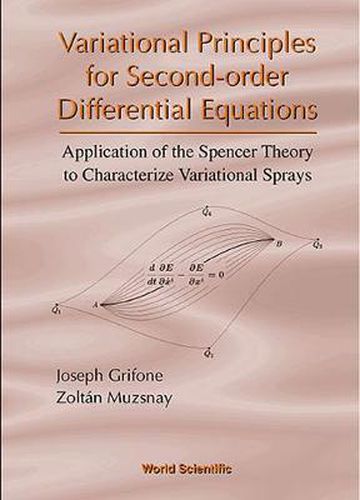Readings Newsletter
Become a Readings Member to make your shopping experience even easier.
Sign in or sign up for free!
You’re not far away from qualifying for FREE standard shipping within Australia
You’ve qualified for FREE standard shipping within Australia
The cart is loading…






The inverse problem of the calculus of variations was first studied by Helmholtz in 1887 and it is entirely solved for the differential operators, but only a few results are known in the more general case of differential equations. This work looks at second-order differential equations and asks if they can be written as Euler-Lagrangian equations. If the equations are quadratic, the problem reduces to the characterization of the connections which are Levi-Civita for some Riemann metric. To solve the inverse problem, the authors use the formal integrability theory of overdetermined partial differential systems in the Spencer-Quillen-Goldschmidt version. The main theorems of the book furnish a complete illustration of these techniques because all possible situations appear: involutivity, 2-acyclicity, prolongation, computation of Spencer cohomology, computation of the torsion, and more.
$9.00 standard shipping within Australia
FREE standard shipping within Australia for orders over $100.00
Express & International shipping calculated at checkout
The inverse problem of the calculus of variations was first studied by Helmholtz in 1887 and it is entirely solved for the differential operators, but only a few results are known in the more general case of differential equations. This work looks at second-order differential equations and asks if they can be written as Euler-Lagrangian equations. If the equations are quadratic, the problem reduces to the characterization of the connections which are Levi-Civita for some Riemann metric. To solve the inverse problem, the authors use the formal integrability theory of overdetermined partial differential systems in the Spencer-Quillen-Goldschmidt version. The main theorems of the book furnish a complete illustration of these techniques because all possible situations appear: involutivity, 2-acyclicity, prolongation, computation of Spencer cohomology, computation of the torsion, and more.